KENYA’S MAJOR NATIONAL PARKS
Kenya has a number of national parks with great wildlife and flora. we have managed to list Kenya’s major national parks.
AMBOSELI NATIONAL PARK
The Amboseli national park is a larger ecosystem that stretches across Kenya and Tanzania covering an area of 3,100 square miles (8,000sq km) comprised of five different habitats. These are the open plains, yellow-barked acacia woodlands, lava-strewn rocky thorn bushes, swamps, and marshes. It has abundant wildlife and a tourist can have a great experience with a clear view of Mount Kilimanjaro.
Animals in this park include herds of elephants, lions, cheetahs, hyenas, jackals, mongoose, giraffes, cape buffalo, warthogs, baboons, monkeys, zebras, impalas, waterbucks, elands, and different species of gazelle.
For bird lovers, Amboseli national park has over 400 bird species and the best places to encounter different bird species include, lakes, marsh, and swamp areas. There are guided walking safaris that allow visitors an opportunity to have a more intimate encounter with the nature of the park.
The park has different tented luxury camps for your stay while on a safari for a great
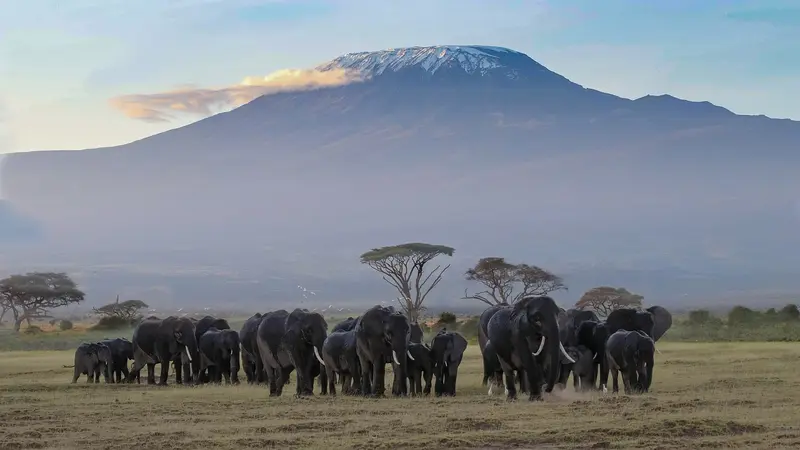

AMBOSELI NATIONAL PARK
The Amboseli national park is a larger ecosystem that stretches across Kenya and Tanzania covering an area of 3,100 square miles (8,000sq km) comprised of five different habitats. These are the open plains, yellow-barked acacia woodlands, lava-strewn rocky thorn bushes, swamps, and marshes. It has abundant wildlife and a tourist can have a great experience with a clear view of Mount Kilimanjaro.
Animals in this park include herds of elephants, lions, cheetahs, hyenas, jackals, mongoose, giraffes, cape buffalo, warthogs, baboons, monkeys, zebras, impalas, waterbucks, elands, and different species of gazelle.
For bird lovers, Amboseli national park has over 400 bird species and the best places to encounter different bird species include, lakes, marsh, and swamp areas. There are guided walking safaris that allow visitors an opportunity to have a more intimate encounter with the nature of the park.
The park has different tented luxury camps for your stay while on a safari for a great

HELL’S GATE NATIONAL PARK
Hell’s gate national park sits at an elevation of 6,200 feet (1900m) above sea level and is found in the southern part of Kenya. It can easily be accessed from Nairobi and has a variety of wildlife and amazing landscapes that can be experienced with a visit to the park. These include lions, leopards, hyenas, cheetahs, zebras, elands, buffalos, hartebeests, klipspringers, reedbucks, hyraxes, and Thomson’s gazelles.
Hell’s gate national park has more than 100 species of birds with even larger species including verreaux eagle augur buzzard vultures such as the rare lammergeyer vulture.
The park has facilities including a Maasai cultural center where visitors can learn about the Maasai tribe’s customs, traditions, and overall culture hence learning about these unique customs and practices.
LAKE NAKURU NATIONAL PARK
Lake Nakuru national park is found in the southern-western part of Kenya. It is a UNESCO heritage site with abundant flamingos and wildlife. It is an alkaline lake and one of the rift valley lakes sits at an elevation of 5,755 feet (1,754m) above sea level.
Lake Nakuru is an alkaline lake that draws a lot of birds especially flamingos and wildlife to its shores. The landscapes of the area include grasslands, marsh, outcrops, rocky cliffs, and sedge, yellow-barked acacia trees. The scenery of Lake Nakuru is breathtaking. The Rift Valley escarpment, dotted with euphorbia trees, rises up from the lakeshore. Heavy mist usually shrouds the lake and surrounding yellow fever trees in the early morning.
Lake Nakuru national park has about 70 white rhinos and about 25 eastern black rhinos.
Wildlife in this park includes; cheetahs, leopards, hyenas, pythons, giraffes, waterbucks, hippos, reedbuck, and bushbucks.
Birdwatchers can hope to see an African fish eagle, Verreaux’s eagle, a Goliath heron, a kingfisher, and of course an abundance of flamingos. It is a spectacular place for birdwatching with over 400 species. There are over a dozen different predator bird species. The flamingo population has earned the lake and national park the slogan, “the greatest bird spectacle on earth.”
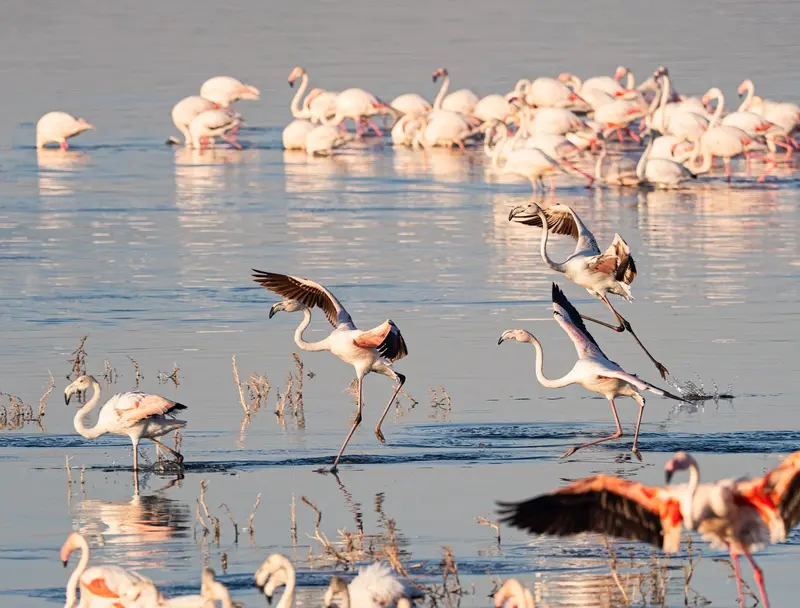

LAKE NAKURU NATIONAL PARK
Lake Nakuru national park is found in the southern-western part of Kenya. It is a UNESCO heritage site with abundant flamingos and wildlife. It is an alkaline lake and one of the rift valley lakes sits at an elevation of 5,755 feet (1,754m) above sea level.
Lake Nakuru is an alkaline lake that draws a lot of birds especially flamingos and wildlife to its shores. The landscapes of the area include grasslands, marsh, outcrops, rocky cliffs, and sedge, yellow-barked acacia trees. The scenery of Lake Nakuru is breathtaking. The Rift Valley escarpment, dotted with euphorbia trees, rises up from the lakeshore. Heavy mist usually shrouds the lake and surrounding yellow fever trees in the early morning.
Lake Nakuru national park has about 70 white rhinos and about 25 eastern black rhinos.
Wildlife in this park includes; cheetahs, leopards, hyenas, pythons, giraffes, waterbucks, hippos, reedbuck, and bushbucks.
Birdwatchers can hope to see an African fish eagle, Verreaux’s eagle, a Goliath heron, a kingfisher, and of course an abundance of flamingos. It is a spectacular place for birdwatching with over 400 species. There are over a dozen different predator bird species. The flamingo population has earned the lake and national park the slogan, “the greatest bird spectacle on earth.”
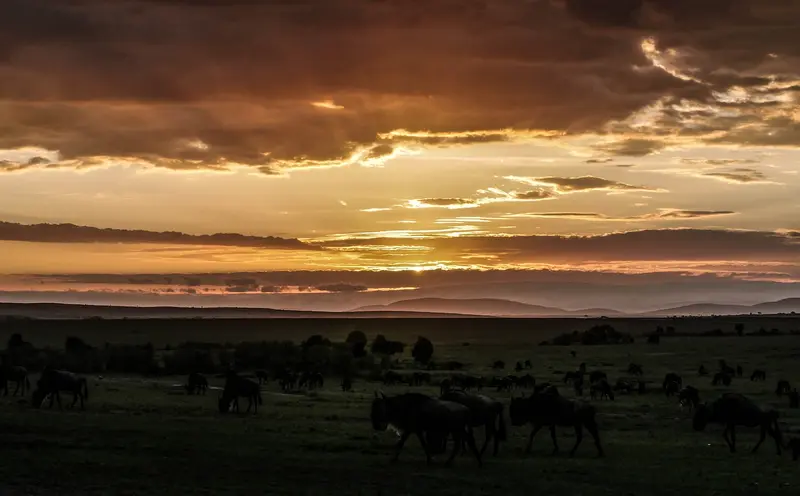
MASAI MARA NATIONAL PARK
Masai Mara national park is found in Kenya along the border of Tanzania. This park was named Masai Mara to honor the Masai people.
It stretches across an area of 580 square miles (1,510 sq. km). The Sand River, Talek River, and Mara River are the primary rivers draining the waters of the reserve. The park is divided into two main areas the inner portion which features pristine wilderness and the outer portion which allows for cattle of the Masai people to graze.
The Masai Mara is renowned for its abundance and variety of larger plains species as well as the variety of predator species. Animals in Masai Mara include hippos, lions, cheetahs, jackals, hyenas, various species of mongoose, giraffes, waterbucks, reedbucks, roan antelopes, warthogs, elands, topis, gazelles, zebras, baboons, crocodiles, different species of monkeys and the black rhinos. All in all, Masai Mara national park accommodates all of Africa’s big 7. Interestingly, Masai Mara is home to the largest collection of lions in Kenya.
Most people target the months between July and October with hopes of experiencing the wildebeest migration through the park.
There are plenty of opportunities for historical and cultural experiences as well. You can visit Masai villages and cultural centres which will all expose you to the culture of the Masai people. It is also a bird-lover viewing spot with over 400 species of birds.
MERU NATIONAL PARK
Meru National Park is located in central Kenya about 220 miles (350 km) northeast of Nairobi. Its elevation varies across the park with the lowest spot occurring in the southeastern part of the park the Tana River. Meru national park is described as “a complete wilderness”. Animals in this park include zebra, the Somali ostrich, gerenuk, reticulated giraffe, gazelles, the lesser kudu leopard, lion, and herds of elephants alongside plenty of bird life and other small game.
This park is extremely scenic with there being an enclosed rhino sanctuary containing both black and white rhinos. The Tara River on the southern waterway in Kenya and several small streams running through the park, with beautiful dom palms and baobab background for arid-adapted animals make Meru national park very unique.
The best time to visit Meru national park is during the dry season (June – October) since the grass in this season doesn’t grow and makes spotting wildlife and navigating the park very easy.


MERU NATIONAL PARK
Meru National Park is located in central Kenya about 220 miles (350 km) northeast of Nairobi. Its elevation varies across the park with the lowest spot occurring in the southeastern part of the park the Tana River. Meru national park is described as “a complete wilderness”. Animals in this park include zebra, the Somali ostrich, gerenuk, reticulated giraffe, gazelles, the lesser kudu leopard, lion, and herds of elephants alongside plenty of bird life and other small game.
This park is extremely scenic with there being an enclosed rhino sanctuary containing both black and white rhinos. The Tara River on the southern waterway in Kenya and several small streams running through the park, with beautiful dom palms and baobab background for arid-adapted animals make Meru national park very unique.
The best time to visit Meru national park is during the dry season (June – October) since the grass in this season doesn’t grow and makes spotting wildlife and navigating the park very easy.
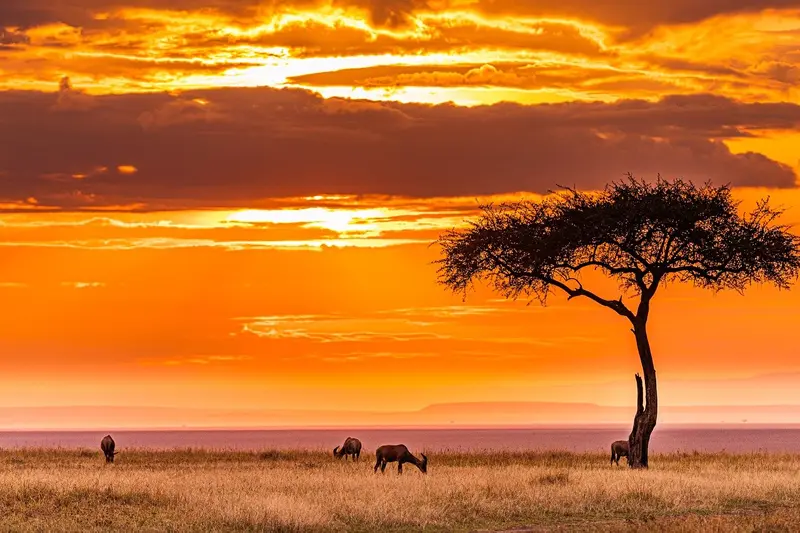
NAIROBI NATIONAL PARK
Nairobi national park was established in 1946 about 7km (4.3 mi) south of Nairobi. Nairobi national park is a wide-open grass plain and a backdrop of the city scrapers, and scattered acacia bush play that hosts a wide variety of wildlife hence a diverse range of habitats and species.
Animals found in this park include African buffalos, lions, black rhinoceros, giraffes, hippopotami, spotted hyenas, blue wildebeests, plains zebras, cheetahs, Thomson’s gazelle, Grant’s gazelle, common elands, impalas, hartebeests, waterbucks, common warthogs, olive baboons, black-backed Jackal, common ostrich, and the Nile crocodiles, etc.
Nairobi national park has a high diversity of bird species with up to 500 permanent and migratory species in the park. Dams are created and they habit many birds and aquatic species.
Park sometimes called Kifaru Ark which means “Rhinoceros Sanctuary”. It is one of Kenya’s most successful rhinoceros sanctuaries, and it is one of only a few parks where visitors can be certain of seeing a black rhinoceros in its natural habitat.
Nairobi National Park does not disappoint with predators including lions, leopards, cheetahs, and hyenas. Other large mammal species include buffalo, black rhino, baboon, eland, gazelle, hartebeest, hippopotamus, impala, giraffe, wildebeest, and waterbuck. One of the missing species that most people hope to see is an elephant.
TSAVO EAST NATIONAL PARK
Tsavo East National Park is found in southeastern Kenya and in the northwest are Tsavo west park and Tsavo East which borders Chyulu Hills National Park. Comprised of savannah, grasslands, and riverbeds. The park is rich with abundant wildlife including the big 5. There are approximately 675 lions across the surrounding ecosystem. Predator species include lions, African wildcats, cheetahs, caracal, bat-eared foxes, hyenas, jackals, leopards, mongoose, and other wild species include the aardwolves, baboons, buffalos, bushbucks, dik-dik, duikers, elands, elephants, gazelles, genets, giraffes, hartebeests, hyrax, impalas, klipspringer, kudu, oryx, porcupine, warthog, waterbucks, zebras and so much more.
For bird watchers, Tsava East national park is a perfect place to go bird watching. The park has about 500 species of birds including the largest ostrich. Other birds include the kingfisher, hornbills, herons, starlings, weavers, buzzards, and kestrels among others.
Mudanda Rock is a scenic lookout that provides great views of elephants and other animals that come to drink water during the dry season. Tsavo East national park is truly a wildlife haven and provides visitors with a rich biodiversity experience. Wildlife is abundant and enriches your Kenya experience. Surprisingly, there are no trails for hiking in the national park. However, there are guided walking safaris that allow you to explore the park on foot. Accommodation in Tsavo National is available. Like the Satao camp which is strategically nestled alongside a watering hole that draws wildlife from around the park giving you a right from the comforts of your accommodation.
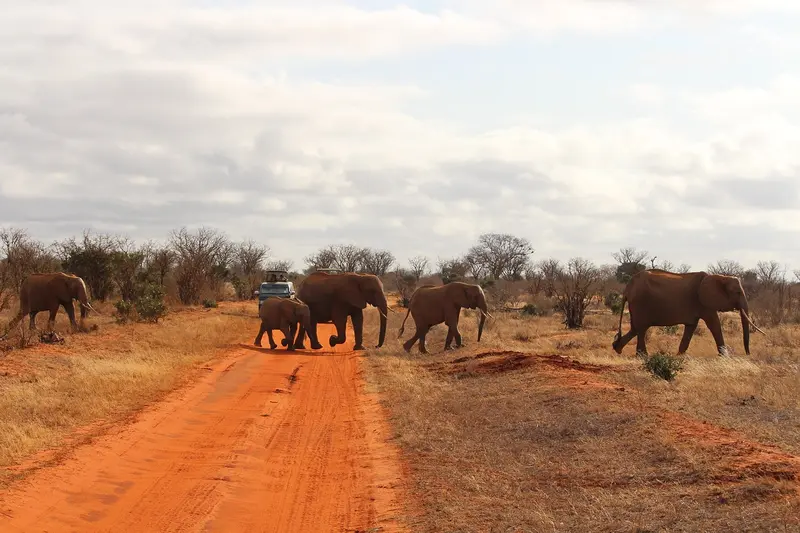

TSAVO EAST NATIONAL PARK
Tsavo East National Park is found in southeastern Kenya and in the northwest are Tsavo west park and Tsavo East which borders Chyulu Hills National Park. Comprised of savannah, grasslands, and riverbeds. The park is rich with abundant wildlife including the big 5. There are approximately 675 lions across the surrounding ecosystem. Predator species include lions, African wildcats, cheetahs, caracal, bat-eared foxes, hyenas, jackals, leopards, mongoose, and other wild species include the aardwolves, baboons, buffalos, bushbucks, dik-dik, duikers, elands, elephants, gazelles, genets, giraffes, hartebeests, hyrax, impalas, klipspringer, kudu, oryx, porcupine, warthog, waterbucks, zebras and so much more.
For bird watchers, Tsava East national park is a perfect place to go bird watching. The park has about 500 species of birds including the largest ostrich. Other birds include the kingfisher, hornbills, herons, starlings, weavers, buzzards, and kestrels among others.
Mudanda Rock is a scenic lookout that provides great views of elephants and other animals that come to drink water during the dry season. Tsavo East national park is truly a wildlife haven and provides visitors with a rich biodiversity experience. Wildlife is abundant and enriches your Kenya experience. Surprisingly, there are no trails for hiking in the national park. However, there are guided walking safaris that allow you to explore the park on foot. Accommodation in Tsavo National is available. Like the Satao camp which is strategically nestled alongside a watering hole that draws wildlife from around the park giving you a right from the comforts of your accommodation.
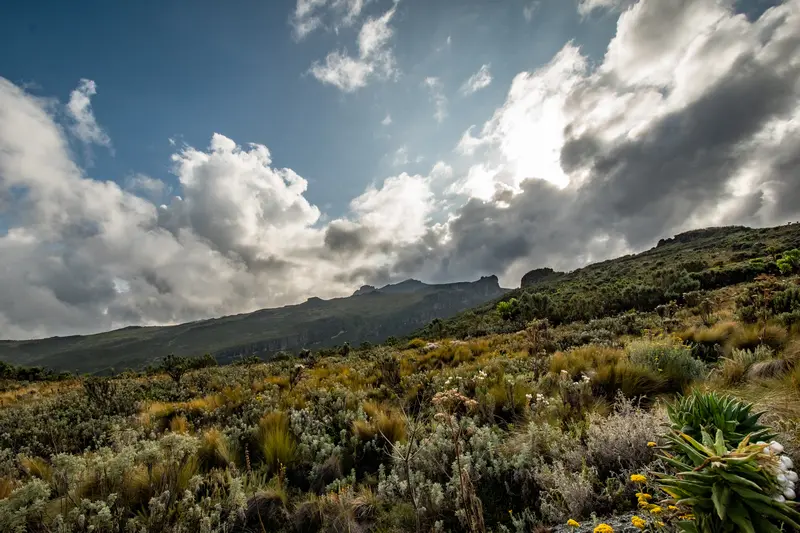
MOUNT ELGON NATIONAL PARK
Mount Elgon national park is located on the western side of Kenya along the border of Uganda. Where it shares sister protection with Uganda’s Mount Elgon national park under the same name. Mount Elgon is believed to be the oldest extinct volcano in East Africa. And sits at the top of the plateau at 10,070 feet (3,070m) from base to summit. The park is fairly small, it features diverse habitats which include savannah, montane forest, woodland, and alpine moorlands. It has an abundance of wildflowers that blanket the moorlands together with orchids.
Mount Elgon is a massive volcanic mountain with many highlights. That includes the summit and accompanying views, the hot springs in the volcano crater, and the varied vegetation
The park has landscapes including cliffs, waterfalls, caves, gorges, and mesas. Calderas, hot springs, and of course Mount Elgon Mountain summits.
Wildlife species in Mt. Elgon national park include; leopards, hyenas, African wild cats, elephants, buffaloes, bushbucks, antelopes, duikers, giant forest hogs, bush pigs, and the beautiful black and white colobus monkey among others.
For bird watchers, the park has about 150 bird species within the park. Hiking up the mountain is a great experience to appreciate nature outside the car.
MOUNT LONGONOT NATIONAL PARK
Mount Longonot National Park is also found in the Southwestern region of Kenya and encompasses an area of about 59 square miles. It is very accessible from the city of Nairobi. a stratovolcano mountain reaching a summit of 9,108 feet (2,776 m)
Specifically known for wildlife such as the lower elevations buffalo, giraffes, hartebeest, Thomson’s gazelle, and zebras. The highlight of this park is Mount Longonot. Hikers trek the mountain to the crater rim. Other activities done in this park include cycling, birding rock climbing, hiking, viewing Lake Naivasha, nature walks, and game viewing. Mount Longonot National Park is also a paradise of rare bird species.
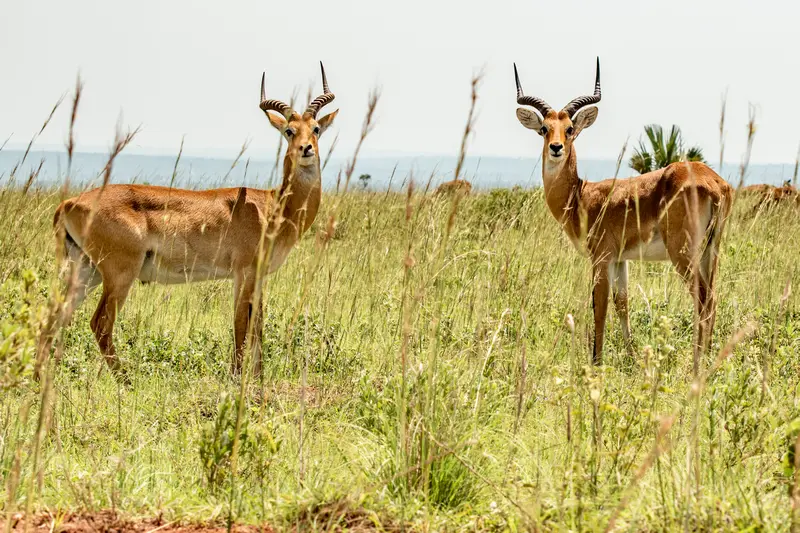

MOUNT LONGONOT NATIONAL PARK
Mount Longonot National Park is also found in the Southwestern region of Kenya and encompasses an area of about 59 square miles. It is very accessible from the city of Nairobi. a stratovolcano mountain reaching a summit of 9,108 feet (2,776 m)
Specifically known for wildlife such as the lower elevations buffalo, giraffes, hartebeest, Thomson’s gazelle, and zebras. The highlight of this park is Mount Longonot. Hikers trek the mountain to the crater rim. Other activities done in this park include cycling, birding rock climbing, hiking, viewing Lake Naivasha, nature walks, and game viewing. Mount Longonot National Park is also a paradise of rare bird species.

SAMBURU NATIONAL RESERVE
Samburu national reserve is found in northern Kenya situated on the banks of Ewaso Ng’iro river. It is named after the Samburu people. Who are nomadic pastoralists and whose traditional finery is among the most beautiful and delicate in the world.
It has an abundance of rare species of animals. Like elephants and predators like lions, leopards, and wild dogs. Others include; giraffe gazelle, gravy’s zebra, reticulated giraffes, beisa oryx, etc. The Samburu birdlife is abundant with over 450 recorded species. Like vulturine guinea fowl, lesser kestrel and the taita falcon, and small ostrich.
